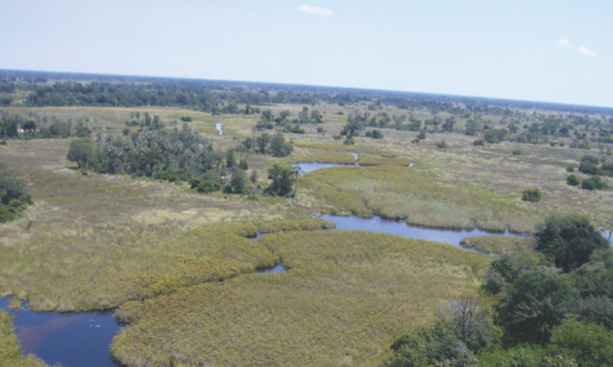Due to low rainfall received across the country and in neighbouring Namibia and Angola, Botswana is likely to experience a hydrological drought as water levels in many rivers has dropped drastically.
Information gathered from Department of Water and Sanitation indicates that during Q4 2018/19 water level in the Okavango River was lower compared to same period in 2017/18. Regional station manager, Kutlo Kgobera said although water levels were increasing from November 2018 to 2nd March 2019, a decline has been observed since then. Inflows started dropping drastically in October 2018 when 2.643 cubic metres of water was recorded at Mohembo while only 1.080 cubic metres was recorded since the beginning of 2019.
Kgobera said generally Okavango Delta and its outflow rivers are currently experiencing very low water levels compared to 2017/18, adding that a hydrological drought is anticipated as the Delta system has very low water levels. The Boro system which feeds the Thamalakane river and the Xudum system which flows into Kunyere passing through Toteng to the Lake Ngami are currently dry with little water left in pools along them. Inflows were observed up to the last week of May 2019. Inflow into this river system was found to be receeding on June 03, hence the Thamalakane and Kunyere rivers are anticipated to receive little or no water in 2019.
A hydrological drought affects ecosystems negatively because fauna and flora depend on water from the Okavango delta, among them over 130,000 elephants and other wild animals. The drought also negatively affects water supply for human consumption in Maun and neighbouring villages, leading to the current acute shortage after Borolong Treatment plant suspended operations due to unavailability of surface water.
WUC has set aside P3.4 million to rehabilitate and equip existing boreholes to address acute water shortage in the tourism town. Already pump testing for water quality is ongoing in 12 boreholes.These boreholes will provide more that 200 cubic metres of water per hour which can supply the whole of Maun, a source said.
The drought also poses a threat to tourism and agricultural sectors. A Safari operator, Kenson Kgaga said low inflows will affect his business negatively. In fact, boat cruising and mokoro excursions have already been suspended since both Thamalakane and Boro rivers have dried up. Mokoro polers in the delta have even relocated from Boro settlement to Ditshiping, which is 30km away. Kgaga’s other fear is that a drought could aggravate human wildlife conflicts when elephants move into settled areas to look for water and food.
During good inflows Lake Ngami becomes a beehive of activity, sustaining a vibrant fishery. A study conducted in 2012 revealed that the lake supported a commercial fishery, which started after inflows received in 2004, whose annual profits were estimated at approximately P1.7 million. The chairman of Lake Ngami Conservation Trust, Sekano Bodio expressed concern that lack of inflows has been a major blow to Ngamiland district. For the past two years the Trust has stopped fishing activities in the lake due to low water levels. The Trust has been forced to shift focus to charcoal production, estimated to last for the next 20 years.
